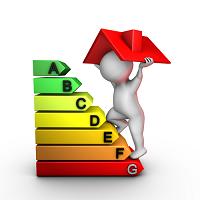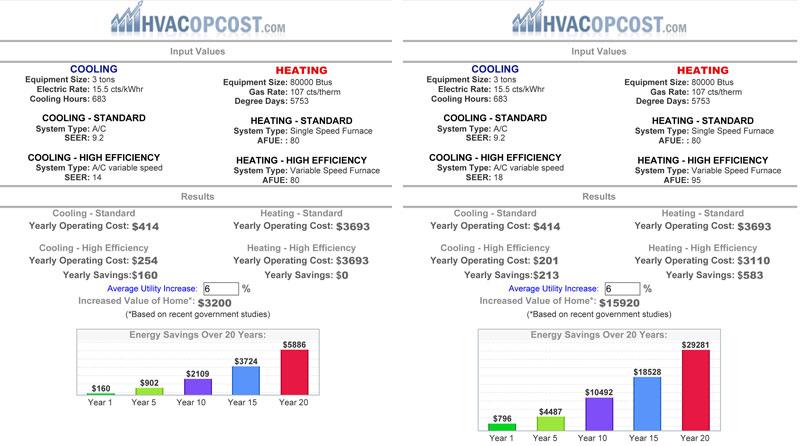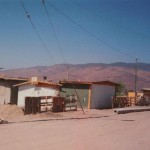 Although the current national average life expectancy of residential furnaces is between 16 and 20 years, many homeowners aren’t waiting to their furnaces to stop working before they look for a replacement. Matter of fact many homeowners with furnaces that are 10 years or older are taking advantage of the current tax credit to replace their unit for a more cost-effective one.
Although the current national average life expectancy of residential furnaces is between 16 and 20 years, many homeowners aren’t waiting to their furnaces to stop working before they look for a replacement. Matter of fact many homeowners with furnaces that are 10 years or older are taking advantage of the current tax credit to replace their unit for a more cost-effective one.
Regardless if your furnace is just about to die or if you are trying to take advantage of the current incentives, there are many factors for homeowners to consider when calculating the return on investment (ROI) of your new energy efficient HVAC unit. So what are the most important factors that homeowners should be looking for when looking to replace their current furnace with an energy efficient HVAC unit?
Know the new standards — While no changes in residential weatherized furnaces, residential central air conditioners and heat pump will take effect until January 01, 2015, a new set of standards for residential non-weatherized* furnaces proposed by the US Department of Energy (DOE) have been already in place since May 1, 2013. Those new energy conservation rules raised both the minimum standards and the regional standards for residential HVAC appliances in a variety of product classes.
- Non-weatherized furnaces — According to this new rule, all non-weatherized residential furnaces and mobile home gas furnaces installed on or after May 1, 2013, in AK, CO, CT, IA, ID, IL, IN, KS, MA, ME, MI, MN, MO, MT, ND, NE, NH, NJ, NY, OH, OR, PA, RI, SD, UT, VT, WA, WI, WV, and WY must have an annual fuel utilization efficiency (AFUE) of at least 90%. In all other states, this value would be 80%.
- Split System Air Conditioners — Starting January 1, 2015, all split system central air conditioners installed in AL, AR, DE, FL, GA, HI, KY, LA, MD, MS, NC, OK, SC, TN, TX, and VA must be at least 14 SEER. Units installed in AZ, CA, NV, and NM must be a minimum 14 SEER and 12.2 EER. In all other states they must meet 13 SEER, which is the current national minimum standard.
- Heat Pumps — Starting January 1, 2015; the new minimum efficiency standard for split system heat pumps is 14 SEER and 8.2 HSPF. There are no regional standards for heat pumps, just a single nationwide standard.
Learn the different lingo — If you don’t work in the industry understanding all the different HVAC nomenclatures can be overwhelming but you need to know at least the basics so you can be a little bit more prepared when it’s time for you to buy your new unit. As far as your furnace goes, you should have a clear understanding of the following lingo: BUT, AFUE, and Two-Stage Operation. Like your oven, your furnace will operate in BTU. BTU or British Thermal Unit is a thermal unit that measures how much heat is required to raise one pound of water by one degree Fahrenheit. Higher the BTU, higher the heating capacity. AFUE or Annualized Fuel Utilization Efficiency measures the furnace’s heating efficiency. The higher the AFUE, the more efficient the furnace is. Two-Stage Operation furnaces provide two levels of heat output for better temperature control. It also makes the unit quieter and it is highly recommended for 2 story homes or residences where the fan is on 24/7.
When shopping for air-conditioner keep in mind the following lingo: SEER, EER, and Equipment Size. SEER or Seasonal Energy Efficiency Ratio is an energy efficiency rating systems for air conditioners. The higher the SEER, the more efficient your unit is. EER or Energy Efficiency Rating is a rating given by the Underwriter (UL) Laboratories to each unit when it is tested for compliance with energy laws. Equipment Size is measured in tons, and it should be proportional to the square footage of your home for better performance.
Compare the numbers before you buy — After you becoming familiar with the current laws of where you live and having a better understanding of the basic lingo, it’s time to start comparing numbers. With so much green washing available, I don’t blame homeowners that are somehow skeptical when I say that replacing their dated HVAC unit with a high-efficiency one will save them money.
Controlled Comfort has a great selection if you’re looking. Instead of simply showing all the benefits of acquiring an energy efficient HVAC unit, I use HVACOPCOST to show them a more accurate scenario. This particular website is very easy to navigate and the results extremely easy to understand too.
Below is a quick comparison I did for a client, earlier this year, who was considering buying a new HVAC for his 1,600 sq.ft. home in Chicago, IL. While option 1 (AC: SEER 14 and Furnace: 80% AFUE), showed an expected yearly savings of $160, option 2 (AC: SEER 18 and Furnace: 95% AFUE) savings was expected to be $796. Although the equipment listed on option 2 was around $1,000 more expensive, the overall savings was roughly 497%. In other words, in approximately 2-3 years the overall savings on this clients yearly energy bill would pay for the equipment upgrade.
* non-weatherized furnaces are all the furnaces that are designed to be placed indoors, away from rain, and snow.
AUTHOR: Andrea Vollf, LEED AP ID+C, is a sustainability professional with over fifteen years of experience in the interior design and marketing industries. Ms. Vollf is an active member of the U.S. Green Building Council – Illinois Chapter, with in?depth knowledge of all aspects of Sustainability – Social, Environmental and Economic.

 The Ultimate Urban Recycling Project – Bay Bridge to be Reborn as a House
The Ultimate Urban Recycling Project – Bay Bridge to be Reborn as a House Laundry to Landscape Greywater System Explained in Five Steps
Laundry to Landscape Greywater System Explained in Five Steps Deconstruction vs. Demolition and Homes from Garage Doors in Mexico?
Deconstruction vs. Demolition and Homes from Garage Doors in Mexico?